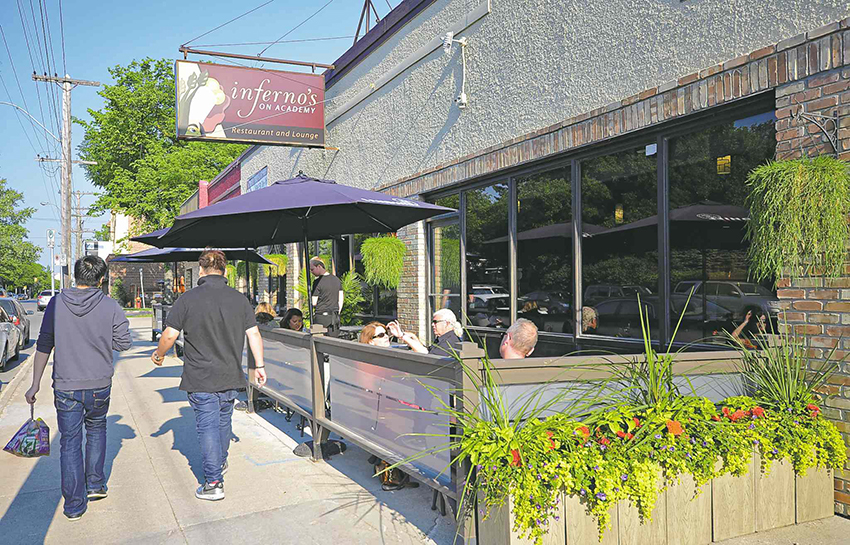By Brent Bellamy, Creative Director and Architect


I support development, just not THIS development.
People are going to park on my street!
My property values are going to plummet!
The traffic isn’t safe for my children!
It seems inevitable that these are the lines recited by local residents whenever new development is proposed in a Winnipeg neighbourhood. Last week, the people of River Heights again mobilized, going door to door collecting signatures, handing out leaflets, bombarding their Councillor with phone calls and e-mails in opposition to a proposal for a new two storey building on Academy Road. In response to the protest, the project’s presentation at Community Committee was delayed until September.
River Heights and many of Winnipeg’s mature neighbourhoods have a long history of resisting change, from adding sidewalk patios to infill housing, each new proposal creates headlines of controversy. A year ago in the face of neighbourhood protest, City Council buckled and rejected a similar plan to construct a small clinic a few blocks west on Academy Road. Despite accommodating more than 23,000 vehicles daily, residents and even some adjacent business owners claimed an added 90 cars per day would create parking problems, traffic jams and unsafe conditions for neighbours.
The process to get a project approved in an established area can be a long and difficult path. Developers and designers initially work with the City’s Urban Planning Division to ensure proposals meet the criteria prescribed by local zoning and by-laws. Once approved by the City Planner, projects that require a variance or re-zoning will be taken to a Community Committee review where opponents have an opportunity to voice concern. If the committee approves the project, it can require further approval from a Standing Policy Committee, Executive Policy Committee and finally City Council.
The challenge for developers is that they can spend significant amounts of money, time and effort meeting all the prescribed requirements from the area planner, only to be rejected in the next steps if councilors react to opposition. This uncertainty can create a difficult business climate as developers become wary of investment, fearing rejection from public pressure, somewhere along the process.
To provide more consistency for developers and to allow residents a say in shaping their communities before proposals are brought forward, the City has been developing local Secondary Plans that outline detailed development criteria in each neighbourhood. Long term goals are identified so the debate doesn’t need to be opened with each new proposal. As a compliment to this, a series of specialized requirements called Planned Development Overlays (PDO), have been created through extensive public consultation to ensure development compatibility on key neighbourhood streets. The PDO for Academy Road not only allows an increase in residential, commercial and employment densities, it specifically promotes the ideal in strategic areas.
This intensification of neighbourhood main streets comes in response to the Our Winnipeg Plan, a 25-year growth blueprint which promotes the establishment of ‘Complete Communities’ within the city. A complete community is identified as a neighbourhood offering a range of lifestyle choices that provides easy access to the necessities of daily living. This includes such things as shops, restaurants, employment, schools and recreation. Complete communities focus on walkability, defined as access to amenities within a comfortable walking distance.
Expanding commercial services on main thoroughfares such as Academy Road increases the walkability and quality of life of the surrounding community by improving access to products and services. In most instances, those who oppose new development in mature neighbourhoods also cherish the fact that their children can walk to school or that they can take an easy stroll to a cafe, flower shop or corner store.
Unlike modern subdivisions, Winnipeg’s grid pattern streetcar suburbs like River Heights have many lifestyle amenities such as schools, community clubs, libraries and parks embedded directly into their fabric. What generally keeps them from being true walkable, complete communities is the lack of a vibrant, full service commercial core to support the day to day needs of the area. For this reason, neighbourhood development plans emphasize higher density growth along main corridors such as Academy Road. Expanding the commercial density in a mature neighbourhood only strengthens the walkable lifestyle that is so valued by most area residents.
Strong local commercial nodes have also proven to be important drivers of renewal and growth within mature neighbourhoods. They can be the economic and employment driver of a community. It has been found that the prosperity of a local business strip typically encourages investment that in turn elevates the prosperity of the surrounding residential area. Contrary to the concerns of most development opponents, diverse, small scale commercial activity generally increases adjacent property values. Numerous studies clearly indicate that in most cities, the neighbourhoods with direct walkable access to lifestyle amenities are those that are most desirable, maintain the highest long term property values and most effectively weather turbulent economic periods.
Typically, as proximity and ease of pedestrian access to the commercial node increases, the resale value of homes follows in direct correlation. In many cities, real estate listings now come with a walkscore rating from www.walkscore.com, a web site that evaluates the walkability of neighbourhoods by calculating the number of destinations within a comfortable walking distance. A recent study of 15 real estate markets in the United States found that in 13 of those cities there was a direct relationship between the level of a neighbourhood’s walkscore and its property values.
New development proposals often appear to come out of nowhere. They can shock unsuspecting local residents who are often unaware of the approved long term plans for their neighbourhood. This surprise results in instinctive and immediate opposition before consideration is given to the long term positive impact change can have on the community. Opposition puts developers in the unfair position of facing rejection after meeting all the prescribed requirements and politicians are left to bridge the two interests.
It is important that all residents in mature neighbourhoods become familiar with the long term plans in place for their community. Inevitable fears over such issues as traffic, parking and safety can be rationally considered in a more realistic context. Understanding these plans will reduce the surprise of new proposals and provide a broader understanding of development goals and the reasons for them.
When Pizzeria Gusto won its long public battle for a sidewalk patio on Academy Road, it quickly became a popular destination for area residents. As new developments like this are allowed to happen along neighbourhood main streets, access to a greater variety of restaurants, shops and services will make communities more complete, more walkable and more vibrant. River Heights has 30% fewer residents today than it did 40 years ago. An increase in density should probably not be feared, but embraced as a way to reinvigorate the neighbourhood, improve quality of life and even increase local property values.
Brent Bellamy is senior design architect for Number Ten Architectural Group.
Original Version as Republished by the Winnipeg Free Press print edition June 15, 2015 B5

